Celery Sprouting Eln Green
$4.49
Apium Graveolens var. Dulce
- Seed Count 3000
- Versatile Celery
- Annual
In stock
Description
Celery Sprouting Eln Green is a versatile variety that is suitable for sprouting, micro greens and full size celery.
Reaching to heights of 60 – 70cm with dark green stalks and slightly ribbed, smooth, stringless stems.
Celery can be used raw or cooked with the leaves being used as a flavouring in fresh or dried form.
| Method: Set seedlings | Soil Temp: 12°C - 21°C |
| Cool Mountain: Oct - Mar | Position: Full sun |
| Arid: May - Aug | Row Spacing: 30 cm apart |
| Temperate: Mar/Apr, Sep/Dec | Planting Depth: 5mm |
| Sub Tropical: Mar - Nov | Harvest: 120 Days |
| Tropical: Apr - Jul | Plant Height: 60 cm |
Climate
Temperature:
- Celery prefers cooler temperatures ranging between 15°C to 20°C.
- It can be grown in more temperate climates, but extreme heat can lead to a bitter taste and flower bolting.
Soil Requirements
Soil Type:
- Celery thrives in loamy, well-drained soil rich in organic matter.
- The soil should have good moisture retention while avoiding heavy clay or sandy soils.
pH Level:
- Aim for a soil pH between 6.0 and 7.0.
- You can test your soil using a pH kit and amend it with lime (to raise pH) or sulphur (to lower pH) as needed.
Amendments:
- Prior to planting, incorporate compost or well-rotted manure to enhance soil fertility, which helps with moisture retention and increases nutrient availability.
Propagation
Starting Indoors:
- Sow seeds indoors in seed trays about 10-12 weeks before the last frost date. Cover lightly with soil as the seeds require light to germinate
- Germination usually takes 14-21 days. Keep the soil moist but not soggy during this period.
Direct Sowing:
- In regions with milder winter conditions, you can directly sow seeds into the garden bed after mid-spring or in late summer for a late crop.
- Thin seedlings to about 10-15 cm apart.
Transplanting:
- When seedlings are 15-20 cm tall and have at least 4 leaf sets, they can be transplanted outdoors.
- Space them 30 cm apart to allow for growth.
Cultivation
Watering:
- Celery has a high-water requirement, needing about 2.5 cm of water per week.
- Regular watering is vital, especially during dry periods.
- Consider using drip irrigation to maintain consistent moisture at the root level.
- Mulching around the plants can help retain soil moisture and suppress weeds.
Fertilisation:
Pre-Planting:
- Mix a balanced fertiliser or compost into the garden bed before planting.
During Growth:
- Fertilise every 4-6 weeks with a high-nitrogen fertiliser or a liquid seaweed solution to support leaf growth.
- Follow package instructions to avoid over-fertilisation.
Companion Planting
Onions:
- Benefits: Onions emit sulphur compounds that can deter common pests such as aphids and carrot flies, which may attack celery.
- Tip: Space onions a moderate distance apart from celery to avoid competition for nutrients.
Leeks:
- Benefits: Similar to onions, leeks also repel pests while offering little competition for space and nutrients.
- Tip: Plant leeks beside celery to create natural pest barriers.
Spinach:
- Benefits: Spinach and celery make good companions because spinach matures quickly, allowing celery to benefit from the extra shade as it grows.
- Tip: Sowing spinach between celery rows can create a microclimate that may help with moisture retention.
Tomatoes:
- Benefits: Tomatoes can provide some shade for celery during the hotter months, and their root systems can help aerate the soil.
- Tip: Be cautious of overcrowding; allow adequate spacing between plants for air circulation.
Pepper:
- Benefits: Peppers can deter aphids and other pests, complementing celery’s growth habits.
- Tip: Ensure both plants receive enough sunlight and water, as peppers require warmer conditions.
Carrots:
- Benefits: Carrots and celery have different root depths, reducing competition for nutrients in the soil. They also help aerate the soil together.
- Tip: Directly sow carrots in the same bed, allowing them to stay at least 10 cm apart.
Plants to Avoid:
Potatoes:
- Reason: Potatoes can compete with celery for nutrients, which may inhibit celery’s growth and development.
Dill:
- Reason: While dill can attract beneficial insects, it may also attract pests that are detrimental to celery.
Fennel
- Reason: Fennel produces allelopathic compounds that can inhibit the growth of celery and other nearby plants.
Pest and Disease Management
Common Pests:
- Watch for aphids, spider mites, and cutworms. Use insecticidal soap or organic pest controls as necessary.
Diseases:
- Celery can be prone to fungal diseases such as leaf blight or root rot.
- To prevent these, ensure proper spacing for air circulation, avoid overhead watering, and rotate crops each year to minimize soil-borne diseases.
Care and Maintenance
Weeding:
- Regularly check for and remove weeds which compete for nutrients and moisture.
- Hand-pulling is often recommended to avoid disturbing celery roots.
Mulching:
- Apply mulch to conserve moisture, suppress weeds, and regulate soil temperature.
Harvesting
- Harvesting typically occurs 3-4 months after planting. Celery is ready to be picked when the stalks are at least 1 cm thick, and the plants are around 30-40 cm tall.
- For the best flavour, harvest in the morning when temperatures are cooler.
- Use a sharp knife to cut the stalks from the base, or you can harvest the entire plant by cutting it at the soil line.
Storage
- Fresh celery can be stored in the refrigerator for up to two weeks. To preserve its crunch, wrap it in a damp paper towel and place it in a plastic bag.
Common Challenges
Bolting:
- This happens when celery tries to flower and can be prompted by stress from heat or drought.
- To prevent bolting, provide adequate water and plant during cooler months.
Bitter Flavour:
- A lack of water or nutrient imbalance can lead to bitterness. Consistent care is essential to maintain flavour.
Postage Charge
Orders under $30 attract a $4.50 shipping charge. Orders $30 and above have free shipping.
Order Times
Seed orders are normally dispatched within three business days. You will receive an email when seeds are mailed out.
Postage Days
Seeds are mailed out Monday to Friday at 1pm. Except for the Friday of long weekends.
Postage Times
WA 2-3 Days: SA,NT 3-5 Days: NSW, ACT, QLD, VIC: 5-7 Days
Carrier
We use Australia Post Letter Postage for the majority of orders
Not only are our seeds packed in recycled paper envelopes, we keep the theme going when we post out website orders. To protect your seeds from moisture and the letter box munchers (snails), we use a very special plastic free material made from plants. They are then put into recycled mailing envelopes. Green all the way 💚🌿

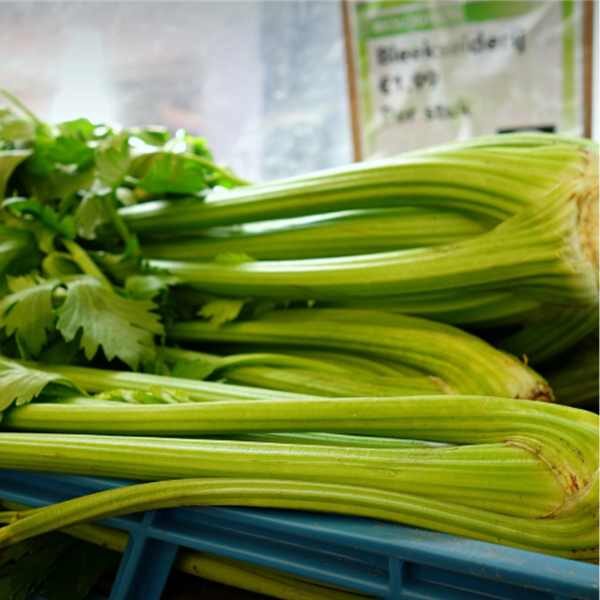




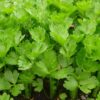
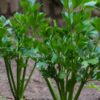


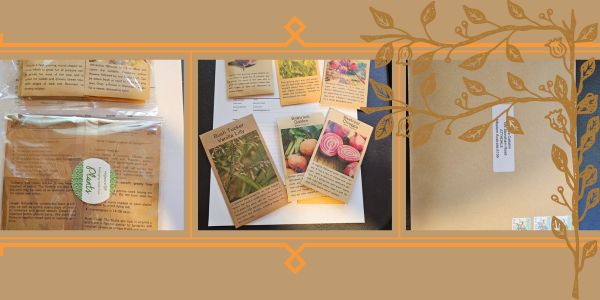
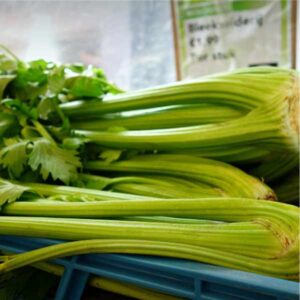
2 reviews for Celery Sprouting Eln Green